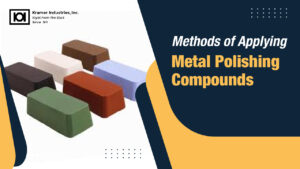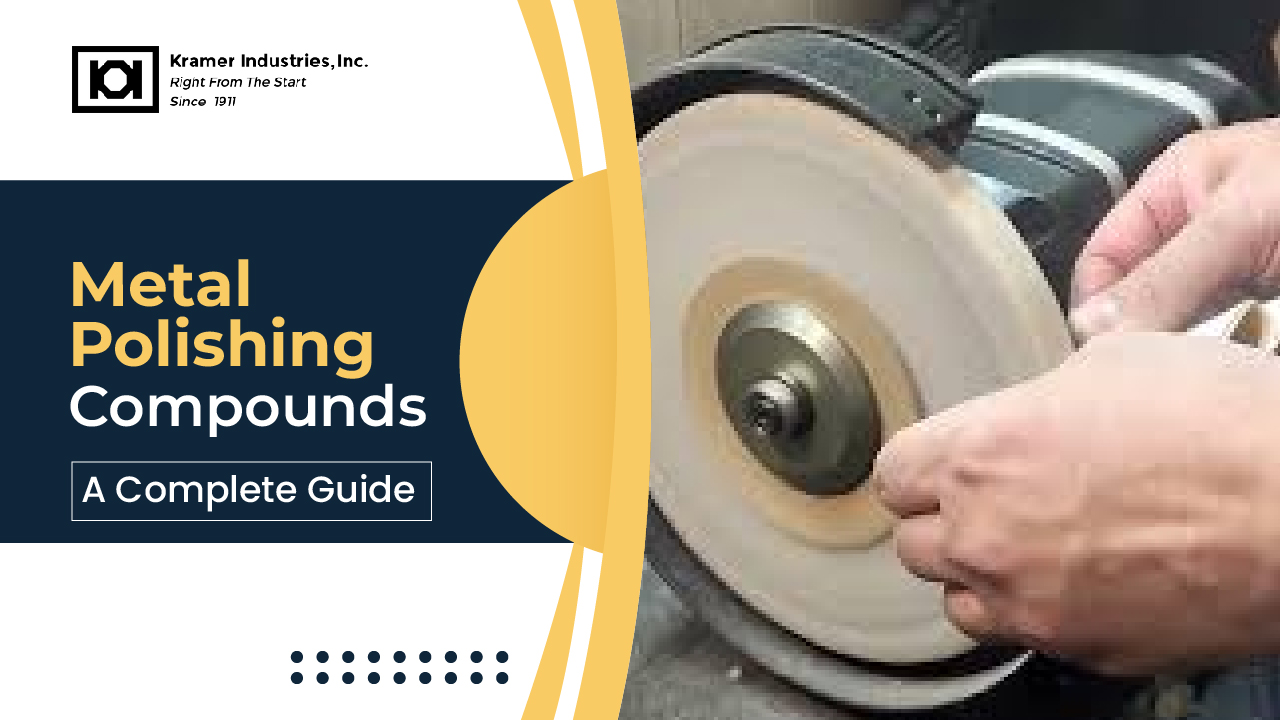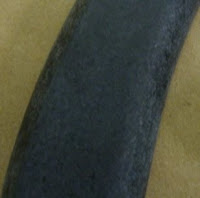In metalworking, to achieve a glossy reflective surface, careful application of metal polishing compounds is needed. Ranging from coarse to chemical blends, this will all depend on the gloss one desires to have. This therefore gives a detailed review of metal polishing compounds: types, applications, and advantages.
Understand the Metal Polishing Agents
Essentially, a metal polishing compound is a specialized product created to remove flaws, marks, and oxides from the surface of the metal. Made up of precisely mixed abrasives and lubricants, these compounds collaborate to polish and perfect the metal, improving its overall look. Instead of just shining, they actively change the metal’s surface, revealing a fresh shine and brilliance, returning it to a state of improved quality and elegance.
Choosing the appropriate compound should, therefore, be done because it will turn the dull and scuffed finish into a shining one, full of brilliance.
Common Metal Polishing Compound Types
- Rouge Substances-Usually, rouge chemicals are used to polish delicate metals, such as gold and silver. They can provide a high sheen because they frequently include extremely fine abrasive particles like iron oxide.
- Compounds in Tripoli-Tripoli compounds, which consist of finely crushed abrasive particles like pumice or rottenstone, are perfect for filing and scraping away scratches from softer metals like copper and brass.
- Emery Substances-Emery compounds, which often contain crushed emery rock, are well-known for being abrasive. Steel and iron, which are tougher metals, may be polished and scratches removed using them.
- Compounds with Aluminum Oxide-These substances are adaptable, providing different levels of abrasiveness that work well with both soft and hard metals. They are frequently employed in the preliminary polishing stages to get rid of scuffs and get the metal surface ready for the final polishing.
- Compounds with Diamonds-These substances, utilized for polishing extremely tough metals and gemstones, are extremely abrasive due to their micron-sized diamond particle content.
Selecting the Correct Metal Polishing Compound
Choosing the right polishing compound is based on various factors like the metal type, preferred finish, and surface imperfections level. For example, aluminum may necessitate a unique method as opposed to stainless steel. Similarly, a product designed to eliminate deep scratches may not be optimal for creating a shiny surface.
Methods of Applying Metal Polishing Compounds
Different types of metal polishing compounds are used in various ways. Typically, the substance is used on the metal’s surface with a cloth, sponge, or buffing wheel. The method includes massaging the compound into the metal, usually in a circular manner, until the desired smoothness and shine are reached. Consistently wiping away residue and inspecting the surface is important to prevent the presence of any leftover compound that may cause streaks or an uneven shine.
Steps of Metal Polishing
Metal polishing is a careful process compiled with the idea to result in a bright, high-quality finish on metallic surfaces. Here we will give you a comprehensive guideline that clearly spells out each and every step.
-
Preparation
Inspection: This will involve inspecting the metal surface for oxidation, scratches, or any other form of imperfections. This evaluation aids in the selection of the respective kinds of polishing compounds and methods.
Cleaning: Clean off the metal surface from dirt, grease, and grime. Apply an appropriate cleaner or degreaser and ensure the surface is dry completely before starting the process of polishing.
-
Surface Preparation
Sanding: The sanding phase is crucial for metal surfaces with significant flaws. The process will yield smooth surfaces with increasingly finer grits of sandpaper. Significant flaws can be eliminated by applying a higher grit, followed by smaller grits for a better finish.
-
Polishing
Mounting: Mount a tapering mandrel on an angle grinder or bench grinder. After that, attach a buffing or polishing wheel with a mandrel using screws. Make sure everything is locked in tightly.
Adding Metal Polishing Compound on the Wheel: Turn on the machine for about 3 to 5 seconds. As it is running, dab some polishing compound onto the turning buffing wheel. The heat that develops as the wheel spins melts the wax and abrasive in the compound and allows the compound to stick onto the wheel.
Buffing: Apply light to moderate pressure to the buffing wheel and to the piece of metal. Work on taking dents, scratches, and imperfections out to achieve a polished finish. Polish to satisfaction.
More Compound: When the buffing wheel appears dry, or the polishing compound is shrinking, more compounds should be added to maintain the same level of polish.
-
Smoothing the Finish
Changing Wheels: Once the first polishing has removed most of the scratches and imperfections, take off the polishing wheel. Install a polishing quick-change disc onto the mandrel and tighten it securely.
Add Compound: Repeat the step one procedure: Start the machine for 3 seconds and add the polishing compound to the fresh wheel. Using light pressure against this wheel to the workpiece, achieves a better finish, and removes any other surface imperfections.
Polish Again: If it still has imperfections, wear a new cotton spiral buffing wheel. Place it along with the mandrel, lock it, and repeat the same process: Place the polishing compound, start the machine, and slide with medium pressure until an imperfection-free quality finish is obtained.
-
Final Touches
Check and Clean Up: The workpiece will shine to perfection once you finish. If satisfied, turn off the machine and wipe the surface using a microfiber cloth. Rub gently for any residue marks, which could be grease or the polishing compound.
Maintenance: To maintain this standard, cleaning and polishing of the metal surface should be done regularly so as to maintain brightness and glow, devoid of future tarnishes.
The steps outlined will take you to a professional polish quality that not only gives enhancements to the look but also helps in making the metal surface more durable.
Metal Polishing Compounds: Use in Barrel Tumblers and Vibratory Tumblers

Tumblers, both barrel and vibratory, give great results with metal polishing compounds to finish metal items. The processes involve placing the metal components inside the tumbler, along with media – which can be ceramic, plastic, or even organic in nature – and the metal polishing compound.
-
Tumblers with Vibration
The metal surfaces are effectively polished and smoothed by the interaction between the metal components, media, and metal polishing compound produced by the vibrating action of these tumblers. Uniform contact is ensured by the constant movement, which leads to even finishing.
-
Recycled Tumblers
The metal components, media, and metal polishing compound inside barrel tumblers tumble over one another when the tumblers rotate. The metal surfaces are polished and flaws are eliminated by this interaction. Though perhaps not as consistent as vibratory tumblers, the tumbling action is nevertheless rather efficient.
Benefits of Metal Polishing Compounds
There are various benefits to using metal polishing compounds. They bring back the metals’ original shine, improve their visual attractiveness, and may also deter future oxidation and tarnish. Polishing compounds are essential in preserving the quality of metal components in industries like automotive and aerospace, where the metal’s appearance is important.
Safety and Management
Although polishing compounds are typically safe for use, it is crucial to handle them properly. Certain compounds contain chemicals that may be strong or abrasive in nature. Make sure to wear protective gloves and work in a space with good ventilation at all times. Reading the safety guidelines on the compound packaging guarantees secure and efficient usage.
Summary
Metal polishing compounds are essential in the pursuit of achieving a perfect metal surface. Understanding the various types of compounds and how they are used is important for achieving desired outcomes when working on automotive parts, household items, or industrial components. By choosing the correct combination and utilizing appropriate methods, you can turn metal surfaces into shining displays of skill and attention.
Purchase high-quality metal polishing compounds from Kramer Industries for superior surface finishing. Their specialized products are designed to effectively remove imperfections, enhance shine, and achieve a professional-grade polish. Trust Kramer Industries for reliable and consistent polishing solutions tailored to meet your needs.
Frequently Asked Questions(FAQs)
- What are metal polishing compounds made of?
They are blends of fine abrasives, waxes, and lubricants. On one hand, the abrasives remove scratches, while the wax allows the compound to stick to the wheel or cloth. - Can one compound work for all metals?
Not usually. Softer metals like gold need gentle rouge. Harder metals like steel require more abrasive compounds, such as emery or aluminum oxide. - How often should I polish metal surfaces?
It depends on usage. Decorative items may need polishing once or twice a year. Tools or automotive parts may need more frequent care. - Can Metal Polishing Compounds be used with tumblers?
Yes. Both barrel and vibratory tumblers can be paired with polishing compounds. You can finish multiple parts at once. - Do polishing compounds protect metal from rust?
They can reduce oxidation and tarnish temporarily. However, they are not permanent rust-prevention products. Applying protective coatings after polishing is recommended.



